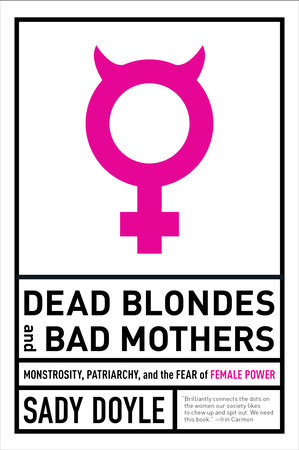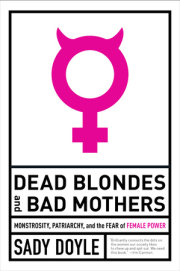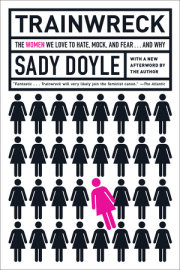Women have always been monsters.
Female monstrosity is threaded throughout every myth you’ve heard, and some you haven’t: carnivorous mermaids, Furies tearing men apart with razor-sharp claws,
leanan sídhe enchanting mortal men and draining the souls from their bodies. They are lethally beautiful or unbearably ugly, sickly sweet and treacherous or filled with animal rage, but they always speak to the qualities men find most threatening in women: beauty, intelligence, anger, ambition. In Christian myth, even the apocalypse is female. The book of Revelations prophesies that the end times will be ruled by a lustful queen, who carries a golden chalice “full of abominations and filthiness of her fornication.” She appears drunk on the blood of saints, covered in jewels, and riding a scarlet beast with seven heads: “And upon her forehead was a name written, mystery, babylon the great, the mother of harlots and abominations of the earth.”
Women have always been monsters, too, in the minds of great men; in philosophy, medicine, and psychology, the inherent freakishness of women has always been a baseline assumption. Aristotle famously concluded that every woman was a “mutilated male.” Thomas Aquinas said that, were it not for their ability to bear sons, God would have been wrong to make women at all: “Nothing misbegotten or defective should have been in the first production of things.” Menstrual blood emitted lethal miasma; a man who had sex with a woman on her period would waste away and die. Female sexuality was insatiable; if given free reign, women would seduce the Devil himself, and use their resulting satanic powers to enslave mortal men. Even in utero, the female body was vampiric. You could tell that a woman was having a daughter if she became uglier over the course of the pregnancy. A girl always stole her mother’s beauty.
This fear is not a thing of the past. The killer period sex is from ancient Rome, the witches are medieval, but the mother-deforming female fetus is something people still believe in today; you’ll find it written up on parenting websites, with explanations about hormones. The medical establishment still regards female bodies as a freakish deviation from the norm; one 2018 study found that 53 percent of female heart attack patients had been told by doctors that their symptoms were “not health-related.” Women and men usually have different cardiac symptoms, and the doctors could only diagnose male hearts. Centuries after Aristotle, Sigmund Freud updated and expanded the “mutilated male” theory by arguing that women were “castrated.” Male and female children alike were supposedly traumatized for life by the knowledge that their mothers did not have penises, seeing the female body forever after as maimed and incomplete—a walking wound. Of course, when mothers do have penises, we are no less likely to judge them.
The basic premise of sexism is that, to paraphrase the noted medieval theologians Radiohead, men have the perfect bodies and the perfect souls. (Well, cisgender white men without disabilities who have never had sex with other men, anyway—once you propose a biological elite, the definitions tend to keep getting more and more elitist.) Men define humanity, and women, insofar as they are not men, are not human. Thus, women must necessarily be put under male control—and to the extent that we resist this control, we are monstrous.
But a monster is not something to dismiss or look down on. A monster does not merely inspire anger or disgust. A monster, by definition, inspires fear. Beneath all the contempt men have poured on women through the ages, all the condemnations of our Otherness, there is an unwitting acknowledgment of our power—a power great enough, in their own estimation, to end the world.
Copyright © 2019 by Sady Doyle. All rights reserved. No part of this excerpt may be reproduced or reprinted without permission in writing from the publisher.





